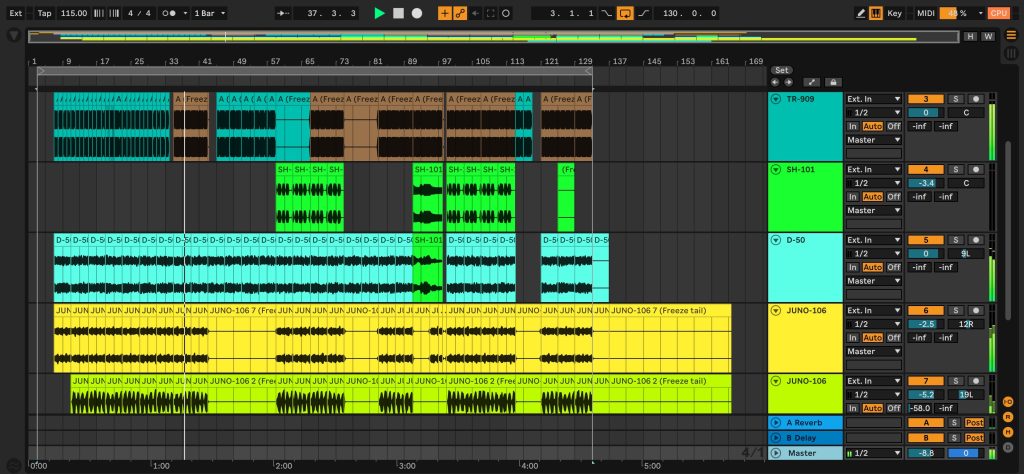In addition to her innumerable awards and stratospheric sales, Beyoncé nurtures a fierce vision. She is an artist who refuses to sit still creatively and constantly pushes the envelope. As a result of all her accolades and creative accomplishments, Beyoncé has amassed a large and loyal fanbase who follow “Queen Bey” on every journey. Renaissance, her first solo album since 2016’s acclaimed Lemonade, references house, disco, techno, gospel, synth-pop, and trap. Re-create Beyonce’s smash “Break My Soul” using sounds from the Roland Cloud Legendary collection.
Musical Renaissance and a House Revolution
Beyonce’s last two projects—Black Is King and Everything Is Love—explored afrobeat and hip-hop, veering from her chart-topping R&B sound. On Renaissance and “Break My Soul,” Beyoncé uncovers a new sonic world by delving into the sounds of post-1970s Black electronic dance music.
"Renaissance highlights many unsung heroes, performers, and early house and electronic music innovators."
2022 saw several artists in the hip-hop and R&B spaces release dance and electronic music projects. Examples include Simple. by IDK and Drake’s Honestly, Nevermind. In this spirit, Renaissance highlights many unsung heroes, performers, and early house and electronic music innovators. Produced by Beyoncé, The Dream, Tricky Stewart, and Jens Christian Isaken, “Break My Soul” flaunts influences from ’90s house music, even sampling and interpolating “Show My Love” by Robin S and “Explode” by Big Freedia. Let’s explore the track in detail.
Building the Track
Drums
A great way to create a track like this is to start with the drums. Using the TR-909, an instrument at the center of dance and electronic music for decades, we can re-create the drum patterns from “Break My Soul.” The best way is to divide the drum pattern into four grooves and program the sequences in the TR-909 sequencer.
The first variation starts with a four-on-the-floor kick and a 16th-note hi-hat pattern. Next, the song breaks down into the four-on-the-floor pattern at different parts of the verse. The third pattern features the snare on beats two and four with an offbeat hi-hat pattern. The chorus groove features a variation on this groove with an open hi-hat. By programming each pattern as a different variation in the TR-909 sequencer (A, B, C, D), it’s easy to record the beats into a DAW and arrange them based on the original.
Pattern One
Pattern Two
Pattern Three
Pattern Four
Melodic Lines
Once the central groove gets established, we can build the rest of the harmonic and melodic parts. The first step is re-creating the main lead and bassline parts which drive the entire song. The “Satin Bass” preset on the D-50 provides the perfect early-’90s dance bass this track needs. The main riff is a two-note phrase that switches between Ab and Db.
D-50
JUNO-106
D-50 and JUNO-106
Piano and Pad
Another prominent element of “Break My Soul” is the piano line running throughout the bulk of the song. The JUNO-106 “1984 Piano” patch provides the ideal house piano to emulate the original track’s sound. The piano part is a syncopated Db minor 9 chord with a two-note melodic line leading into the chords.
JUNO-106 “1984 Piano”
Now that we have the piano part, we can combine this part with the other melodic lines. With this in place, we have this track’s main melodic and harmonic content.
A pad comes in at the end of the bridge and provides some release before the chorus returns. Use the JUNO-60 “SY Poly Synth” patch for this pad and adjust the portamento knob to create a gliding effect. Although this sound only appears once, it creates a beautiful contrast to the staccato melodic parts of the verse and chorus sections.
All Synths
"Although the bridge pad only appears once, it creates a beautiful contrast to the staccato melodic parts of the verse and chorus sections."
Bass
For most of this song, the bassline is a lower-octave version of the main melodic line we programmed on the D-50. However, on the chorus, there is a nice bass line that amplifies the entire track. For this part, use the SH-101 “SH101 Bass 1” patch. The bassline is a simple two-note phrase alternating between Ab and A natural.
The bridge features an ascending bass figure that reharmonizes the original harmony. This line starts on E natural and then walks up a Db minor scale starting on Gb and using a chromatic passing tone of G natural before landing back on Db. This movement creates a beautiful moment of harmonic tension in an otherwise harmonically fixed song.
All Synths and SH-101
Chorus
Bridge
Final Arrangement
Once all the parts are in place, the last step is arranging them in the same sequence as the actual record. We can accomplish this by dragging the original into a DAW and doing an A/B test between the new arrangement and the recording. One of the main things to notice is the drum arrangement. Each TR-909 pattern must come in at the appropriate point in the song. There are also moments where the drums drop out entirely or revert to the simple four-on-the-floor pattern.
"One of the main things to notice is the drum arrangement. Each TR-909 pattern must come in at the appropriate point in the song."
The final step is arranging the main melodic lines with the D-50 and JUNO-106 piano parts. Although they are present throughout most of the track, these parts drop out at crucial moments in the song. Their absence creates a contrast between the different sections. Adding the bassline and pad last makes sense, as they only appear on the chorus and bridge. Finally, listen to this arrangement of “Break My Soul” and notice how the rich character of the Roland Cloud instruments evokes the vibe of the original track.
Full Arrangement








